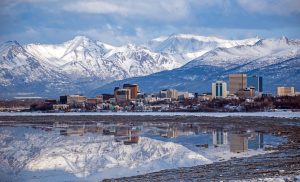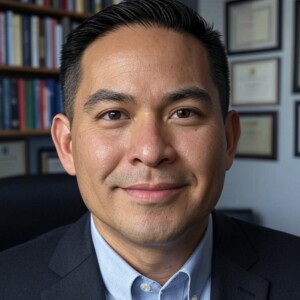How to Become a Licensed Marriage and Family Therapist in Alaska
To become a licensed marriage and family therapist (LMFT) in Alaska, you'll need a master's or doctoral degree in marriage and family therapy from a COAMFTE or CACREP-accredited program, complete 3,000 supervised clinical hours (including 1,700 direct client contact hours), pass the AMFTRB national exam, and complete 6 hours of domestic violence training. The process takes about 2-3 years post-graduation, and Alaska LMFTs earned a median salary of $62,220 as of May 2023.

Marriage and family therapists are licensed mental health professionals who work with families, couples, and individuals to improve relationship dynamics and mental health. Unlike traditional mental health counselors who primarily focus on individual therapy, marriage and family therapists bring a systemic, family-centered perspective to treatment. They assess how family roles and relationships impact each member's mental health and overall well-being.
If you're considering this rewarding career path in Alaska, you'll need to meet specific education, experience, and examination requirements set by the Alaska Board of Marital and Family Therapy. This guide walks you through each step of becoming a licensed LMFT in the Last Frontier.
Table of Contents
Educational Requirements for Alaska LMFT Licensure
The foundation of your LMFT career starts with earning the right graduate degree. Alaska requires applicants to hold a master's degree or doctorate in marriage and family therapy or a closely related field from a regionally accredited institution.
The Alaska Board of Marital and Family Therapy recognizes programs that include these curriculum components (9 semester hours equals 12 quarter hours):
- 9 semester hours of coursework in marital and family therapy
- 9 semester hours of coursework in marital and family studies
- 9 semester hours of coursework in human development
- 3 semester hours (4 quarter hours) of coursework in professional ethics and law
- 3 semester hours (4 quarter hours) of coursework in research
Ensuring Your Degree Meets Alaska's Standards
You can be confident your program meets national and state standards by choosing a degree accredited by the Commission on Accreditation for Marriage and Family Therapy Education (COAMFTE) or the Council for Accreditation of Counseling and Related Educational Programs (CACREP). These accrediting bodies ensure programs meet rigorous quality standards.
If you're balancing professional and personal obligations, you'll appreciate the growing number of accredited MFT programs offered in hybrid, blended, or online formats. These flexible options let you complete most coursework online while fulfilling in-person clinical requirements.
For more information about MFT degree options available to Alaska residents, explore MFT degrees and schools in Alaska.
Alternative Pathway: Post-Graduate Training
Suppose you already hold a master's degree or higher in a related field, such as social work, psychology, psychiatric nursing, or ministry. In that case, you may satisfy Alaska's educational requirements by completing a post-graduate training program in marriage and family therapy. This pathway allows career changers to enter the MFT field without starting a new degree program from scratch.
Experience and Supervision Requirements
After completing your degree, you'll need to accumulate substantial supervised clinical experience before applying for full licensure. Alaska requires at least 3,000 hours of post-graduate supervised experience, which typically takes about two years of full-time work to complete.
Breaking Down the 3,000 Hours
Your supervised experience must include:
- At least 1,700 hours of direct clinical contact with families and couples
- At least 200 hours of supervision, including:
- Minimum 100 hours of individual supervision
- Minimum 100 hours of group supervision
The remaining hours can include related clinical activities such as case documentation, treatment planning, consultation, and professional development activities approved by your supervisor.
Finding a Qualified Supervisor
Your clinical supervisor must hold an active Alaska LMFT license or meet Alaska's requirements for out-of-state supervisors. It's essential to establish a supervisory relationship with a qualified professional early in your post-graduate career. Many graduates complete their supervised hours at community mental health centers, private practices, hospitals, or social service agencies throughout Alaska.
Examination and Additional Requirements
Once you've completed your educational and experiential requirements, you can apply for licensure through the Alaska Department of Commerce, Community, and Economic Development's Board of Marital and Family Therapy.
Licensure Application Fees
As of 2024, direct licensing costs include a $350 application fee, a $1,250 initial licensure fee, and approximately $365 for the AMFTRB exam. These fees are subject to change. You'll also need to budget for domestic violence training (typically $50-200) and any required background checks.
The AMFTRB National Examination
After your application is approved, the Alaska Board will authorize you to schedule the national licensing exam through the Association of Marital & Family Therapy Regulatory Boards (AMFTRB). This computer-based exam tests your knowledge of MFT theory, practice, and ethics. You'll earn your Alaska LMFT license once you pass this exam.
Domestic Violence Training Requirement
Alaska also requires verification that you've completed at least six contact hours of training in domestic violence. You can fulfill this requirement through:
- Coursework during your degree program
- Training offered by the Alaska or the American Association of Marital and Family Therapy
- Approved seminars, mini-courses, or workshops in law, behavioral sciences, medicine, ethics, or related disciplines
Licensed Marriage and Family Therapist Career Outlook in Alaska
The career outlook for LMFTs in Alaska is promising, with strong national growth projections and competitive salaries that reflect the state's cost of living and remote locations.
Alaska MFT Salary Data (2023)
According to the most recent data from the Bureau of Labor Statistics (May 2023), Alaska employed 80 marriage and family therapists with the following salary distribution:
| Percentile | Alaska Annual Salary | National Annual Salary |
|---|---|---|
| 10th Percentile | $46,040 | $42,610 |
| 25th Percentile | $48,480 | $48,600 |
| Median (50th) | $62,220 | $63,780 |
| 75th Percentile | $75,560 | $85,020 |
| 90th Percentile | $88,590 | $111,610 |
Alaska's median salary of $62,220 is slightly below the national median of $63,780, though entry-level salaries in Alaska are higher than the national average. The mean (average) salary in Alaska is $69,970, reflecting the state's higher cost of living and the premium paid for remote or rural practice locations.
National Job Growth Projections
The national job outlook for marriage and family therapists is robust. According to the Bureau of Labor Statistics Occupational Outlook Handbook, employment of LMFTs is projected to grow 14% between 2021 and 2031. This growth rate is much faster than the average for all occupations and reflects increasing recognition of the importance of mental health services and family-centered therapy approaches.
During these ten years, approximately 6,400 annual job openings are expected nationwide due to a combination of new job growth, retirements, and normal job turnover. This robust demand means strong career prospects for new LMFTs entering the field.
Research Additional Psychology Professional Licenses Granted by Alaska
As you explore the path to becoming an LMFT, you may also want to familiarize yourself with related mental health careers in Alaska. Each profession offers unique opportunities to help individuals, families, and communities, with varying education requirements and earning potential.
Psychologist
Becoming a psychologist in Alaska requires a PhD or PsyD degree and offers strong earning potential. Clinical and counseling psychologists in Alaska earned a median salary of $99,400 as of May 2022, with experienced practitioners in the 75th to 90th percentile earning between $118,020 and $132,200.
Licensed Professional Counselor
Learn how to become a licensed counselor in Alaska. Licensed professional counselors need a master's degree with a specialty focus. Alaska's substance abuse, behavioral disorder, and mental health counselors earned a median salary of $63,900 as of May 2022, with top earners (75th-90th percentile) making approximately $80,000 to $94,960.
Social Worker
Learn how to become a social worker in Alaska. Social work requires a master's degree in social work (MSW). As of May 2022, Alaska's child, family, and school social workers earned a median salary of $59,840, while the state's mental health and substance abuse social workers earned a median of $51,240. The highest earners (90th percentile) in these categories earned $94,900 and $95,180, respectively.
Frequently Asked Questions About Alaska LMFT Licensure
How long does it take to become an LMFT in Alaska?
The complete process typically takes 8-10 years, from the start of your undergraduate education. This includes 4 years for a bachelor's degree, 2-3 years for your master's in MFT, and approximately 2 years to complete the required 3,000 supervised clinical hours. However, if you already hold a bachelor's degree in a related field, you can potentially complete the remaining requirements in 4 to 5 years.
Can I get licensed in Alaska with an online MFT degree?
Yes, Alaska accepts online and hybrid MFT degrees as long as COAMFTE or CACREP accredits the program. Keep in mind that even with an online degree program, you'll still need to complete supervised clinical hours in person with real clients and an approved supervisor.
How much does the Alaska LMFT licensing process cost?
As of 2024, direct licensing costs include a $350 application fee, a $1,250 initial licensure fee, and approximately $365 for the AMFTRB exam. These fees are subject to change. You'll also need to budget for domestic violence training (typically $50-200) and any required background checks. Total direct costs generally range from $2,000 to $2,500, not including the cost of your graduate education.
Does Alaska offer license reciprocity for LMFTs with other states?
Alaska participates in the AMFTRB Mobility program, which can simplify the licensing process for LMFTs already licensed in other states. If you hold an active LMFT license in another jurisdiction and meet Alaska's requirements, you may be eligible for expedited licensure. Contact the Alaska Board of Marital and Family Therapy directly to discuss your specific situation and determine if you qualify for reciprocity or license portability.
What's the difference between an LMFT and an LPC in Alaska?
While both LMFTs and Licensed Professional Counselors (LPCs) are licensed mental health providers, LMFTs specifically focus on relationship dynamics and family systems therapy—LMFTs complete graduate training in marriage and family therapy, specializing in the treatment of relationship issues. LPCs, on the other hand, typically have broader training in general counseling and may work with a wider range of mental health concerns, including those beyond family and relationship issues.
Are there continuing education requirements for Alaska LMFTs?
Yes, Alaska requires LMFTs to complete continuing education to maintain active licensure. Be sure to check with the Alaska Board of Marital and Family Therapy for current continuing education requirements, as these can change over time. Staying current with CE requirements ensures you maintain your license in good standing and stay updated on best practices in the field.
Key Takeaways
- Alaska requires a master's or doctoral degree in MFT from a COAMFTE or CACREP-accredited program, ensuring you receive nationally recognized training in marriage and family therapy.
- You must complete 3,000 supervised hours post-graduation, including at least 1,700 hours of direct clinical contact with families and couples over approximately 2 years.
- The AMFTRB national exam and 6 hours of domestic violence training are required before licensure, with total licensing costs around $2,000-$2,500
- Alaska LMFTs earned a median salary of $62,220 as of May 2023, with the mean salary reaching $69,970
- The field is projected to grow 14% nationally through 2031, much faster than average, with approximately 6,400 annual job openings.
MFT Degree Programs Accepting Students from Alaska
Ready to Start Your LMFT Career in Alaska?
Explore accredited marriage and family therapy programs that meet Alaska's licensure requirements. Compare degree options, specializations, and formats to find the right fit for your career goals.
2024 US Bureau of Labor Statistics salary figures and job growth projections for Marriage & Family Therapists are based on state and national data, not school-specific information. Conditions in your area may vary. Data accessed October 2025.







